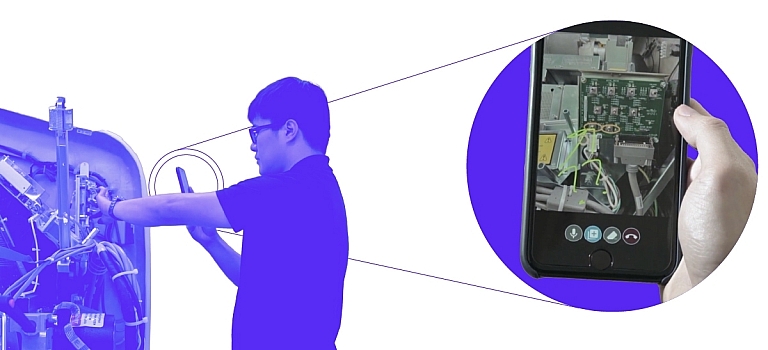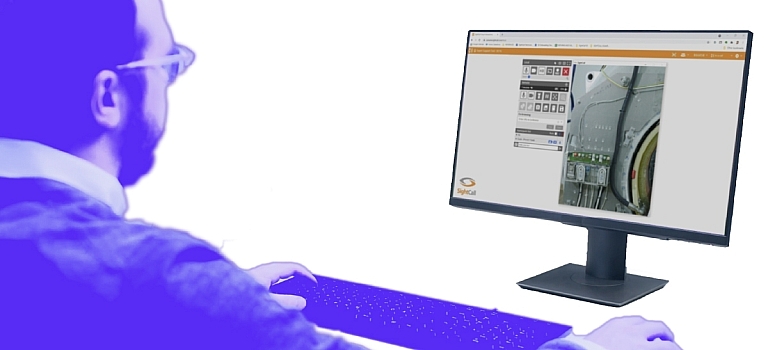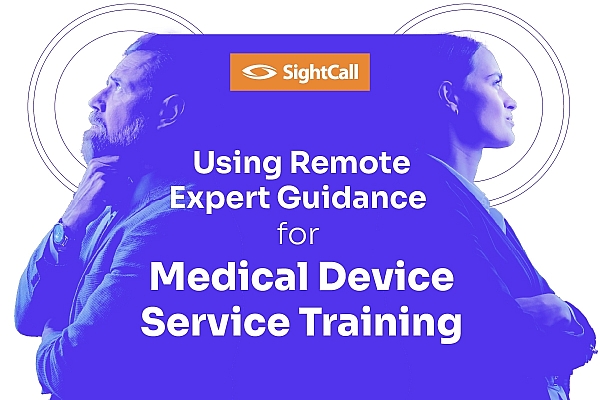Meet Frank.
Every medical equipment service team has a guy like Frank.
Thirty years and change on the job. Encyclopedic knowledge of your company’s product line. Never been stumped by a device on-site.
Yes indeed, nobody knows their way around the inside of an MRI machine like Frank.
And that’s the problem.
Because Frank is counting the days until he trades his coveralls for hip waders. His retirement day is outlined in red marker on his wall calendar.
Frank is a short timer now.
He plans to treat himself with a few weeks of fly-fishing in Montana before taking a 2-month Caribbean cruise with his wife, followed by “a whole lot of nothing.”
Good for Frank.
Not so great for you.
Because unless you do something quick, all that knowledge in Frank’s head is bound for the Bighorn River and the Bahamas.
Which is nowhere near where you need it to be.

Here Comes the Silver Tsunami
According to the US Bureau of Labor Statistics, employment of medical equipment repairers is projected to grow much faster than the average for all other occupations.
That’s a big deal.
The prediction is for 17% growth in a decade, which translates to roughly 7,700 job openings every year through 2031. That’s more than triple the growth rate of other occupations.
But before you pop the champagne and start handing out high-fives, don’t forget some of the reasons for those numbers.
Yes, the medical device industry is booming. The overall medical technology market value is projected to reach $579.4 billion in 2023, with medical devices taking credit for 81% ($470.6) of that total.
But many of those job openings will come from the serious talent crisis in the field service profession. As more experienced engineers switch jobs or retire, companies are scrambling to plug their workforce gaps.
This skilled workforce crisis has been looming for decades and the pandemic only made it worse.
In 2021,47 million people quit their jobs in what was called The Great Resignation.
And according to an article by the National Association of Manufacturers, 1.4 million U.S. manufacturing jobs were lost during the early days of the pandemic.
That “set the manufacturing labor force back by more than a decade.”
And the manufacturing skills gap in the U.S. could result in 2.1 million unfilled jobs by 2030, according to another study by Deloitte and The Manufacturing Institute.
Those losses come on top of what the labor market has been bracing for, which is the “aging out” of the boomer generation.
Some call it the “Silver Tsunami,” which drives home the idea that the potential impact on service organizations could be absolutely devastating.
What are you supposed to do in the face of so much change and big numbers?
One of the biggest fears among manufacturers and service organizations is that future waves of retirees will leave whole industries without critical institutional knowledge.
That’s why it’s urgent to take steps now to retain, organize and pass that knowledge down to the next generation of field engineers.
If your company hasn’t done it yet, you need to find ways to pass down all the industry experience and information from your senior workforce before they leave.

How to use enhanced video technology to accelerate upskilling
Machines in the med tech space are complicated and the learning curve is steep. Advanced equipment is costly, compliance is strict, and the consequences of a malfunction can literally be life or death.
That’s why field engineers who work on medical devices are always challenged to keep up.
As long as science and technology continue to evolve, training will always be a part of the med device technician’s job.
This is not a problem for employers because investing in skill-based training works.
In a survey by the US Chamber of Commerce and SHRM, the top two reasons given by employers were that skill-based training provides a return on investment (63%) and helps directly address skills gaps (62%).
The bigger issue for companies right now is time.
Today, and every day until 2030, 10,000 Boomers will reach retirement age.
Upskilling and training doesn’t happen overnight. But there are more efficient ways for it to happen on the job.
Here’s where it might pay dividends to expand your definition of training.
Clear your mind for a moment of any traditional notions of training. Forget about online courses, in-person seminars or apprenticeship programs.
What if more training could come from simply watching really skilled people do their job? From anywhere at any time?
And not passively watching videos on YouTube, either. We’re talking about an active and engaged visual session between veteran engineers and rookie field techs.
We know that using remote expert guidance is proving to be one of the most effective tools for helping train junior field engineers on medical equipment.
How do we know? Because companies all over the world are using it right now.

What are the benefits of using remote expert guidance for medical device training?
It’s a long list, but we’ll keep it brief.
First, trainees get the benefit of watching the work in a real world context, with locations and customers they may likely encounter in the future.
Seeing and hearing a senior engineer as they perform tasks can provide a more engaging learning experience for junior technicians. They can watch the senior engineer’s technique, ask questions in real-time, and receive immediate feedback.
The use of remote video eliminates the need for junior technicians to physically be on-site with a senior engineer. This can save time and money, as it reduces travel costs and the time it takes to schedule on-site training.
Junior techs can also review the recorded sessions at their own pace. This flexibility can lead to increased efficiency in training, as they can access the video sessions whenever they need a refresher or have a question. This can improve retention because the more they see and hear, the better they will remember.
Finally, remote video training can also provide a standardized method of training, which ensures that all junior technicians receive the same information and instruction, regardless of their location.
This can help to reduce training inconsistencies and ensure that junior technicians have a consistent and comprehensive understanding of the skills and knowledge they need to perform their field work.
In turn, this can help to increase the overall quality of work performed by junior techs, and ensure that they are better equipped to handle complex service calls.

Invest in technology that helps you leverage your best talent
Every industry on Earth has felt the massive shift in the way people work.
More companies are seeking a balance between people and technology, remote and on-site, and tradition and innovation.
That’s why one of the biggest buzzwords of the last few years has been “hybrid,” which describes that happy medium place in the middle of it all.
Hands-on, face-to-face training will never completely go away. So long as these machines exist in physical reality, it will take people with actual tools and genuine skills to fix them.
But as more companies struggle to cope with outside forces such as the economy, the workforce, changing technology and growing competition, they are finding advantages in learning to work smarter with technology.
Efficiency doesn’t happen by accident.
So before your most experienced engineer trades his company cap for one of those fishing caps covered in feathery lures, maybe think about investing in digital tools to get all that good stuff out of his head.
Don’t let Frank be the one that got away.



